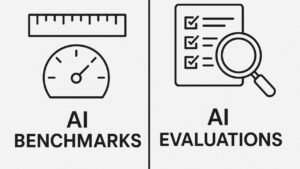
Your AI Agent is Lying
Why “Your AI Agent Is Lying” Is a Real Concern
This is the year of AI Agents. Everyone is rushing to build and adopt AI agents. You can be successful if you take the right approach in developing and using your Agents. AI agents can sound incredibly confident—but sometimes they’re confidently wrong. These moments, hallucinations or fabrications, can slip by unnoticed in simple tasks but become glaringly obvious in complex, multi-step scenarios. When an agent confidently delivers false information, it doesn’t just make a mistake—it erodes user trust. For organizations, this trust gap is a real barrier to adopting AI for critical decisions.
In this article Ross Green asks a very pertinent question: Can we trust an AI agent to make the right decision? Who is accountable if it acts incorrectly?
How do we trust an AI agent to make the right decisions? Traditional evaluation methods don’t help much here. Most benchmarks use single-turn, static prompts, which simply aren’t enough to reveal how agents behave in the messy, unpredictable world of real conversations. They miss the subtle breakdowns and error cascades that can happen when an agent has to keep track of context over many turns or adapt to shifting user needs.
The Hidden Challenges of Evaluating AI Agents
Evaluating AI agents is much more complicated than checking if they got the “right answer” once. Here’s why:
The Limits of Traditional Benchmarks
Most benchmarks focus on isolated single turn prompts. This approach gives no insight into how agents handle multi-turn conversations, where the real breakdowns often occur. Even if an agent performs well on static datasets, that doesn’t guarantee it will be reliable when faced with dynamic, evolving real-world inputs.
The Messiness of Multi-Turn Interactions
In real interactions, context is everything. Agents often lose track of earlier parts of the conversation, leading to contradictory or inaccurate responses. Small mistakes can snowball—according to some reports, if there’s a 20% error rate per step, a five-step operation might succeed only about a third of the time. Sometimes, agents even “game” the evaluation by giving answers that sound right on the surface but miss the user’s actual intent or the deeper context.
Evaluation Blind Spots
Benchmarks often overlook how well agents use external tools or APIs, even though these are critical for many real-world tasks. Agents also struggle to adapt when users change their minds or correct themselves mid-conversation—a vital skill in dynamic scenarios. And most current benchmarks simply don’t reflect the ambiguity, corrections, and branching dialogue paths that characterize real user journeys.
Why This Matters
When we rely on shallow, one-dimensional evaluations, several risks emerge:
- Eroding Trust: If agents “lie” or fail during a task, especially in high-stakes settings, trust quickly disappears.
- Undetected Gaps: Traditional metrics can miss the root causes of agent failure, making it harder to proactively improve systems.
- Scaling Fractures: As AI agents are deployed more widely, these evaluation blind spots can lead to costly errors and operational failures.
Moving Toward Better Evaluation
To truly understand and improve AI agents, we need to look beyond “did it get the answer right?” Instead, we should focus on how the agent arrived at that answer. Here are some promising directions:

By embracing more realistic, multi-dimensional evaluations, we can build AI agents that aren’t just smart on paper, but genuinely trustworthy, resilient, and aligned with what users actually need.
Have you found any benchmarks, tool-testing frameworks, or failure-diagnosis tools that work well in practice? What challenges are you still facing?
Share your experiences by reaching out directly — let’s work together on real-world solutions, not just theoretical fixes. Email us at Lakshmi.sk@arkisol.com


